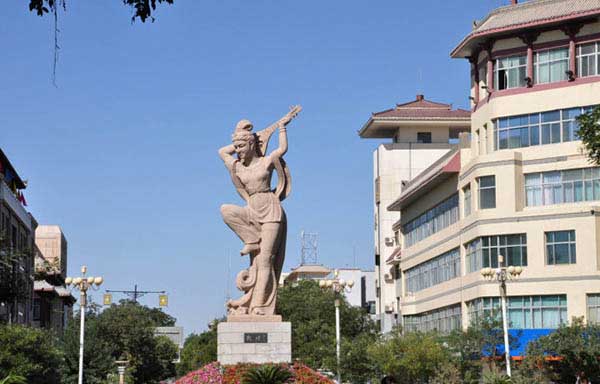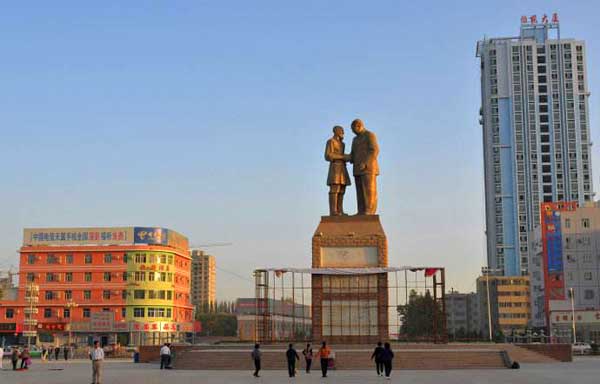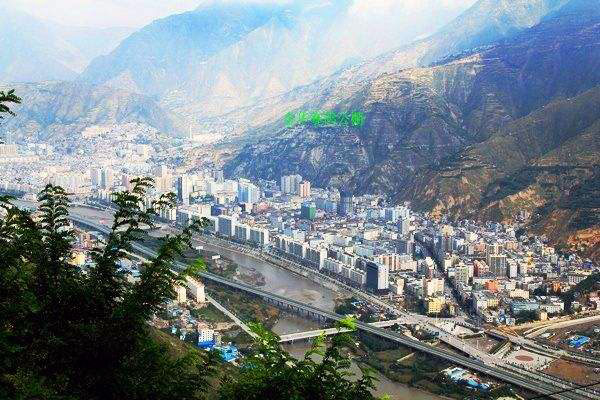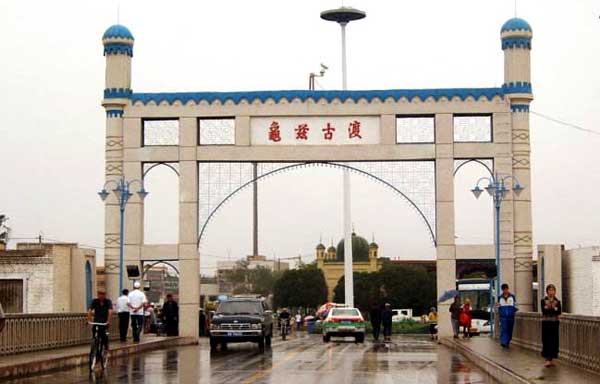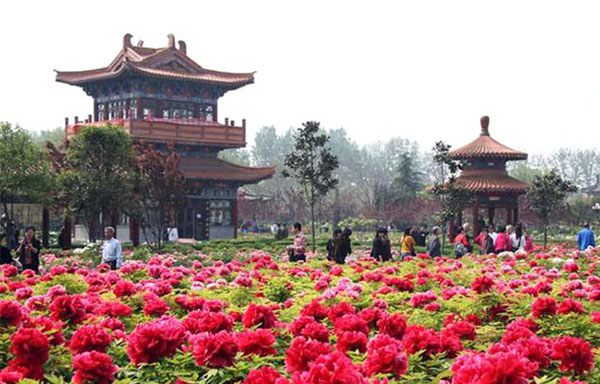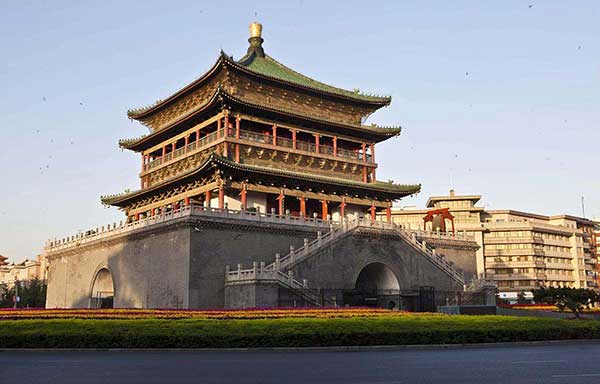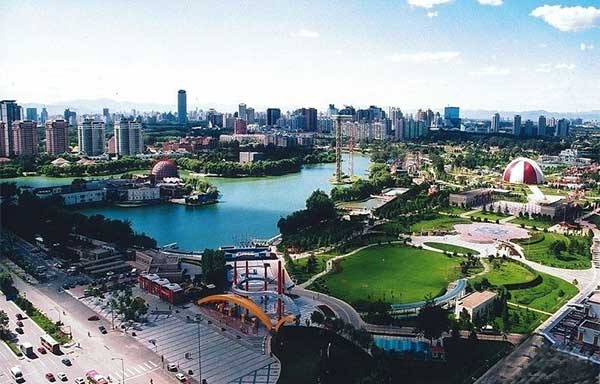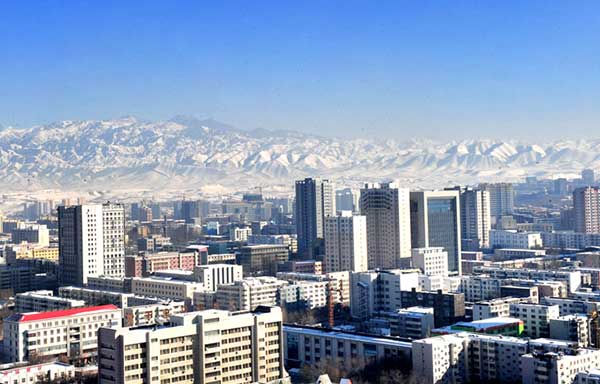- By admin
- In DunhuangKnowledge
- 2017-11-28
Mogao Caves from the national geographic
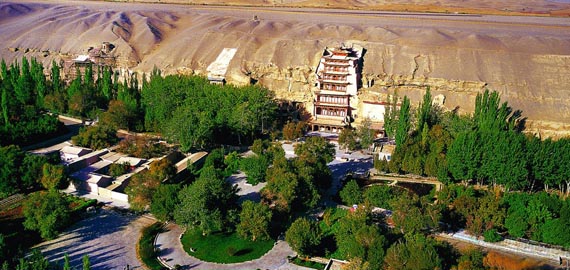
What kept Xuanzang going, he wrote in his famous account of the journey, was another precious item carried along the Silk Road: Buddhism itself. Other religions surged along this same route—Manichaeism, Christianity, Zoroastrianism, and later, Islam—but none influenced China so deeply as Buddhism, whose migration from India began sometime in the first three centuries A.D. The Buddhist texts Xuanzang carted back from India and spent the next two decades studying and translating would serve as the foundation of Chinese Buddhism and fuel the religion's expansion.
Near the end of his 16-year journey, the monk stopped in Dunhuang, a thriving Silk Road oasis where crosscurrents of people and cultures were giving rise to one of the great marvels of the Buddhist world, the Mogao caves.
Emerging from the wind-sculptured dunes some 12 miles southeast of Dunhuang is an arc of cliffs that drop more than a hundred feet to a riverbed lined with poplar trees. By the mid-seventh century, the mile-long rock face was honeycombed with hundreds of grottoes. It was here that pilgrims came to pray for safe passage across the dreaded Taklimakan Desert—or in Xuanzang's case, to give thanks for a successful journey.
Within the caves, the monochrome lifelessness of the desert gave way to an exuberance of color and movement. Thousands of Buddhas in every hue radiated across the grotto walls, their robes glinting with imported gold. Apsaras (heavenly nymphs) and celestial musicians floated across the ceilings in gauzy blue gowns of lapis lazuli, almost too delicate to have been painted by human hands. Alongside the airy depictions of nirvana were earthier details familiar to any Silk Road traveler: Central Asian merchants with long noses and floppy hats, wizened Indian monks in white robes, Chinese peasants working the land. In the oldest dated cave, from A.D. 538, Xuanzang would even have seen those bandits again—only in this rendition, the thugs had been captured, blinded, and ultimately converted to Buddhism.
When Xuanzang passed through Dunhuang, he could not have known that his translations of the Buddhist sutras would inspire Mogao's artists for centuries to come. Nor could he have known that more than 1,200 years later his work would lead to the rediscovery and plunder, and ultimately the protection, of the grottoes. All the monk could see was that here, in a desert on the outskirts of the empire, the Buddhist faith was already being transformed with each stroke of paint in the darkness.
For a religion that preaches the transience of all things, the ever shifting sands of China's western deserts might seem the perfect setting for such glorious artistic expression. But the miracle of the Mogao caves is not their impermanence but rather their improbable longevity.
Carved out between the fourth and 14th centuries, the grottoes, with their paper-thin skin of painted brilliance, have survived the ravages of war and pillage, nature and neglect. Half buried in sand for centuries, this isolated sliver of conglomerate rock is now recognized as one of the greatest repositories of Buddhist art in the world. The caves, however, are more than a monument to faith. Their murals, sculptures, and scrolls also offer an unparalleled glimpse into the multicultural society that thrived for a thousand years along the once mighty corridor between East and West.
The Chinese call them Mogaoku, or "peerless caves." But no name can fully capture their beauty or immensity. Of the almost 800 caves chiseled into the cliff face, 492 are decorated with exquisite murals that cover nearly half a million square feet of wall space, some 40 times the expanse of the Sistine Chapel. The cave interiors are also adorned with more than 2,000 sculptures, some of them among the finest of their era. Until just over a century ago, when a succession of treasure hunters arrived across the desert, one long-hidden chamber contained tens of thousands of ancient manuscripts.
Related destinations
Why Choose Us?
We are the top Silk Road tour operator based in Dunhuang, China. We focus on providing well designed Silk Road China Tours with resonable price and thoughtful service.
- Easy & carefree booking
- The best value
- Great travel experience
- Locally operated
Hot Tours
-

6 days Gansu tour to Binglingsi, Xiahe and Langmusi
Tour type : Private tour Price : from *** Destinations : Lanzhou - linxia - Xiahe - Langmusi - Hezuo - Lanzhou -

12 Days Gansu Highlights Tour
Tour type : Private tour Price : from *** Destinations : Xian – Tianshui – Lanzhou – Xiahe – Langmusi – Hezuo – Zhangye – Jiayuguan - Dunhuang -
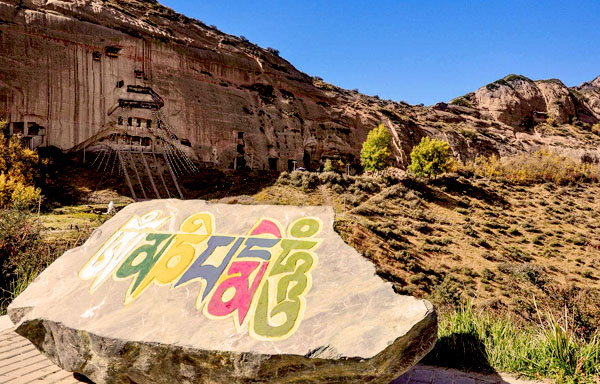
10 Days Silk Road Classic Tour
Tour type : Private tour Price : from *** Destinations : Xian - Zhangye - Jiayuguan - Dunhuang - Turpan - Urumqi -

5 Days Zhangye - Alxa youqi Highlights Tour
Tour type : Private Tour Price : from *** Destinations : Zhangye - Alax youqi - Zhangye

